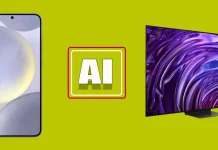TV’s with a V-chip – explained
The V-chip is a programming module in televisions since 2000. Its purpose is to block certain programs based on their ratings. It is designed to limit children’s viewing of violent TV shows or programs intended for adult audiences. The V-Chip system works in the U.S., Brazil, and Canada. In the U.S., V-Chip is regulated by the Federal Communications Commission, that is, at the legislative level.
History of V-Chip
You should know that people have long wondered how you can limit children from watching unwanted programs. Sure, you can limit certain TV programs, but if you have hundreds of TV programs, it’s very complicated and time-consuming. That’s why the idea arose of restricting the viewing of certain TV programs based on ratings. This way you don’t have to think about what channel your child is watching. The V-chip was introduced shortly before television was taken to the next level. Ten years later, televisions became computers. Originally, the V-chip was a separate module that was built into the television. Today, the V-chip can be a regular service program in a television.
How does the V-chip work
The principle of the V-chip is that the TV program being broadcast has its own rating. The content rating information is broadcast during the telecast. If the V-Chip feature is enabled, the TV determines if the program can be shown based on the settings selected by the user. If the rating does not meet the set lock threshold, the TV blocks the content from being shown. Because this is a state-regulated legislative initiative, all TV programs and shows broadcast on terrestrial or cable television are rated.
V-Chip Rating
V-Chip has developed six access levels to rank television programs.
- TV-Y – All children can watch
- TV-Y7 – For children 7 years and older
- TV-G – For general audiences
- TV-PG – Recommended for viewing with parents
- TV-14 – Appropriate for ages 14 and up only
- TV-MA – For mature audiences only
Yes, of course, V-Chip technology is a little outdated in today’s environment. It was invented back in 1994. When television was the main source of video. Now, of course, with a laptop or smartphone, you can find any content on the Internet. The limitation has somewhat lost its function, you can watch videos not only on TV, but also on streaming services. But for young children, the technology is relevant.
Criticism of the V-Chip
Some publications point out that the technology can be bypassed, as the V-Chip on the TV can be disabled through the menu. But that was only the case in the early days of the technology. In modern TVs, access to the settings can be limited by setting a password.






